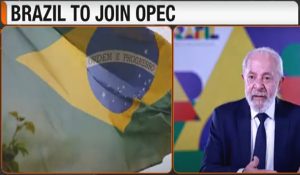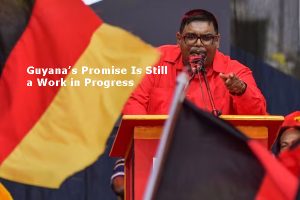
By Andrew E. Kramer and Anton Troianovski/NYTimes
STANYTSIA LUHANSKA, Ukraine
EnergiesNet.com 02 18 2022
Residents near Ukraine’s front line rushed into basements for cover Thursday as exchanges of artillery fire with Russian-backed separatists reached their most intense level in months, an ominous development amid Western fears that Russia might use the fighting as a pretext to invade Ukraine.
As the United States and Russia traded conflicting accounts over whether Russian forces were really pulling back from the Ukrainian border, as Moscow has insisted, the separatists claimed they had come under fire from the Ukrainians. That is precisely the sort of incident Western officials have warned Russia might try to use to justify military action.
Source: Rochan Consulting | Map notes: Russia invaded and annexed the Crimean Peninsula in 2014. The action was widely condemned under international law, and the territory remains disputed. The dotted line in eastern Ukraine is the approximate dividing line between the Ukrainian military and Russian-backed separatists who have been fighting since 2014. On the eastern edge of Moldova is Transnistria, a Russian-backed breakaway region.

At the White House, President Biden said “every indication we have is they’re prepared to go into Ukraine, attack Ukraine.” He said the United States had “reason to believe” that Russia was “engaged in a false flag operation to have an excuse to go in.”
Secretary of State Antony J. Blinken made an unscheduled trip to New York, where he told the United Nations Security Council that American intelligence “indicates clearly” that Russian forces surrounding the country from three sides “are preparing to launch an attack against Ukraine in the coming days.”
The escalation of tensions rippled throughout the markets, where stock prices plunged.
Russia continued to insist Thursday that it had no plans to invade, issuing new updates about troop withdrawals and dismissing the American invasion warnings as “information terrorism.”
The Russian government also published a lengthy response to American proposals made last month to ease tensions, maintaining the Kremlin’s push to regain a sphere of influence in Eastern Europe and issuing a vague warning of new military deployments. If the United States does not accede to its demands, the document said, “Russia will be forced to respond, including through the implementation of measures of a military-technical character.”

Belarusian and Russian flags at a joint military exercise on Thursday in Belarus.(Emile Ducke/NYT)
In eastern Ukraine on Thursday, where a kindergarten was shelled, the spike in violence evoked the sort of scenario that Western leaders have been warning of amid the enormous Russian troop buildup surrounding Ukraine.
President Vladimir V. Putin of Russia this week repeated his false claim that Ukraine was carrying out a “genocide” against Russian speakers in the country’s east, while the Russian authorities announced an investigation into supposed “mass graves” of Russian-speaking victims of Ukrainian forces.
And on Thursday, the Kremlin’s spokesman, Dmitri S. Peskov, offered an ominous assessment. “The excessive concentration of Ukrainian forces near the contact line, together with possible provocations, can pose terrible danger,” he said.
Mr. Blinken told the Security Council that Moscow appeared to be setting the stage.
“Russia plans to manufacture a pretext for its attack,” he said, citing a “so-called terrorist bombing” or “a fake, even a real attack” with chemical weapons. “This could be a violent event that Russia will blame on Ukraine,” he said, “or an outrageous accusation that Russia will level against the Ukrainian government.”
If so, it would not be the first time.
When Russia annexed Crimea in 2014, it did so after claiming that Russian speakers there were threatened by the pro-Western revolution in Kyiv, which the Kremlin described as a fascist coup. And in 2008, Russia invaded Georgia after the Georgian Army moved into a Russian-backed separatist enclave there.
The skirmishing in Eastern Europe between Ukrainian forces and Kremlin-backed separatists is longstanding, but Thursday’s violence was the worst since a cease-fire was reached two years ago.
The combatants exchanged not just shells but accusations. The Ukrainian military said three adult civilians had been wounded at the kindergarten, and on the other side, a Russian-backed separatist leader claimed Ukraine had launched mortar fire “barbarically and cynically.”
ADVERTISEMENTContinue reading the main story
The artillery fire began in the early morning and did not let up with the advent of evening. The sharp crack of explosions echoed off buildings and flashes of light from incoming shells silhouetted trees.Video00:000:310:31Ukrainian Military Says Shelling Wounded CiviliansShelling in eastern Ukraine damaged a kindergarten, knocked out electricity and wounded at least four adult civilians and two soldiers, according to the Ukrainian military.CreditCredit…Lynsey Addario for The New York Times
The days of whiplash developments made unmistakable the volatility of a crisis that American officials fear could lead to an assault by one of the world’s most powerful militaries against Ukraine, Europe’s second-biggest country, a development younger Europeans never thought they would see.
Live Updates: Russia-Ukraine Tensions
Updated Feb. 18, 2022, 6:07 a.m. ET13 minutes ago13 minutes ago
- After a night of heavy shelling, tensions simmer in eastern Ukraine as crisis deepens.
- What is the Munich Security Conference?
- Russia warns of a ‘military-technical’ solution to Ukraine. What does that mean?
Still, in Moscow, many analysts remained convinced that Mr. Putin’s troop buildup was a bluff — a means to pressure the West to rule out Ukrainian membership in NATO and to force the alliance to roll back its presence in Eastern Europe.
Whatever his true intentions, the diplomatic and military crisis has also become an intense battle of public messaging, with both Moscow and Washington deploying vivid imagery and rhetoric to discredit the other side.
Secretary of Defense Lloyd J. Austin III said at a meeting of his NATO counterparts in Brussels that Russia continued to move troops closer to Ukraine’s borders. He said it was also adding combat aircraft and stocking up on blood supplies in anticipation of casualties on the battlefield.
“I know firsthand that you don’t do these sorts of things for no reason,” said Mr. Austin, a retired four-star Army general. “And you certainly don’t do them if you’re getting ready to pack up and go home.”
Early Friday morning, soon after arriving in Munich for an annual security conference, the State Department’s spokesman said Mr. Blinken had accepted a proposal to meet with the Russian foreign minister, Sergey V. Lavrov, late next week.
The spokesman, Ned Price, did not provide a time or place for the meeting, the two diplomats’ second in two months, except to say it would not happen if Russia further invaded Ukraine. “If they do invade in the coming days, it will make clear they were never serious about diplomacy,” Mr. Price said in the statement.
Although there are some 150,000 Russian troops surrounding Ukraine, Russia has cast the deployments as little more than military drills. On Thursday, international reporters were invited to visit Belarus — a close Kremlin ally — to see for themselves. There, amid the roar of Russian and Belarusian firepower, they were treated to some mocking comments directed at Western intelligence agencies by Belarus’s strongman leader, Aleksandr G. Lukashenko.
“There will be no invasion tomorrow,” Mr. Lukashenko said as the military drills were staged at a desolate military training ground southeast of Minsk, the country’s capital. “Are you still entertaining this crazy idea?”

Mr. Lukashenko was scheduled to meet with Mr. Putin in Moscow on Friday, and pledged that he was willing to keep Russian troops in his country for “as long as necessary.”
Western officials say the Russian troops gathered in Belarus are part of what makes the current invasion threat so dire, allowing the Kremlin to attack from the north as well as from the Russian mainland to the east and from Crimea and the Black Sea to the south.
Understand the Escalating Tensions Over Ukraine
A brewing conflict. Antagonism between Ukraine and Russia has been simmering since 2014, when the Russian military crossed into Ukrainian territory, annexing Crimea and whipping up a rebellion in the east. A tenuous cease-fire was reached in 2015, but peace has been elusive.
A spike in hostilities. Russia has been gradually building up forces near its border with Ukraine, and the Kremlin’s messaging toward its neighbor has hardened. Concern grew in late October, when Ukraine used an armed drone to attack a howitzer operated by Russian-backed separatists.
Preventing an invasion. Russia called the strike a destabilizing act that violated the cease-fire agreement, raising fears of a new intervention in Ukraine. Since then, the United States, NATO and Russia have been engaged in a whirlwind of diplomacy aimed at averting that outcome.
The Kremlin’s position. President Vladimir V. Putin of Russia, who has increasingly portrayed NATO’s eastward expansion as an existential threat to his country, said that Moscow’s growing military presence on the Ukrainian border was a response to Ukraine’s deepening partnership with the alliance.
Rising tension. Western countries have tried to maintain a dialogue with Moscow. But the Biden administration warned that the U.S. could throw its weight behind Ukraine in case of an invasion. France, Germany and Poland also warned Russia of consequences if it launched incursions into Ukraine.
A key question now is whether Russia will continue its diplomatic engagement with the West. While Mr. Putin and Mr. Lavrov held a flurry of meetings and calls with their Western counterparts in recent weeks, there were no more such interactions on the calendar for the coming days.
Mr. Blinken said that the State Department was “evaluating” the Russian document delivered to Washington on Thursday and that he had proposed to Mr. Lavrov that the two meet in Europe next week.
The State Department spokesman said the Russians had responded with proposed meeting dates for late next week, “which we are accepting, provided there is no further Russian invasion of Ukraine.”
The document indicated there was only a narrow diplomatic way forward.
It said an American proposal to allow Russia to inspect U.S. missile defense bases in Poland and Romania that the Kremlin sees as a threat could “be further taken into consideration.” It also said that Russia saw “the potential for mutually acceptable agreements” on the subject of long-range bomber flights near national borders. And it said that Russia was “open in principle” to a discussion of replacing the Intermediate Nuclear Forces Treaty, a landmark 1987 nuclear arms-control pact that the Trump administration abandoned in 2019, after accusing Russia of violating it.
But Moscow insisted that those elements could be agreed upon only as part of a package that addressed Russia’s central demands.
“We welcome the readiness of the United States for appropriate consultations,” the document said. “However, this work cannot replace the settlement of the key problems posed by Russia.”

Among Russia’s demands was that NATO militaries halt all cooperation with Ukraine and remove all Western weaponry delivered to the country in recent years to help it defend against Russia and Russian-backed separatists. The document also repeated Russia’s central demands for “security guarantees” that Mr. Putin first described last November, including that NATO assure that Ukraine would never join the alliance and that it would pull back troops stationed in countries that joined the alliance after 1997.
“Our ‘red lines’ and fundamental security interests are being ignored, and Russia’s inalienable right to assure them is being rejected,” the document said.
Western leaders have rejected the demand to pull back troops or bar certain countries from NATO, but have hinted at the possibility of Ukraine itself swearing off membership in the alliance.
And while the letter reiterated recent denials by Russian officials of any plans to invade Ukraine, it also warned of an unspecified military response if those demands were not met, one that analysts have interpreted as the potential deployment of advanced missile systems in a new, more threatening posture.
“No ‘Russian invasion of Ukraine’, which the United States and its allies have officially been announcing since last fall, is happening, nor is one being planned,” the document said. But if the United States does not provide “firm, legally binding guarantees of our security,” it said, “Russia will be forced to respond, including through the implementation of measures of a military-technical character.”
Andrew E. Kramer reported from Stanytsia Luhanska, Ukraine, and Anton Troianovski from Moscow. Lara Jakes contributed reporting from Washington.
Andrew E. Kramer is a reporter based in the Moscow bureau. He was part of a team that won the 2017 Pulitzer Prize in International Reporting for a series on Russia’s covert projection of power. @AndrewKramerNYT
Anton Troianovski is the Moscow bureau chief for The New York Times. He was previously Moscow bureau chief of The Washington Post and spent nine years with The Wall Street Journal in Berlin and New York. @antontroianA version of this article appears in print on Feb. 18, 2022, Section A, Page 1 of the New York edition with the headline: Fear of War Rises as Shelling Pelts Eastern Ukraine.












